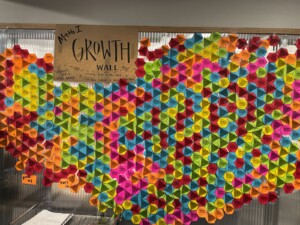Helpful Tools for Providing Effective Competency-Based Education

Editor’s Note: This post is an appendix to a recently released report on competency-based education entitled Show What You Know: The Landscape of Competency-Based Education.
We’ve been looking into what schools, districts, networks, and impact organizations are doing to accelerate progress toward an effective CBE system, and in we will be releasing a full publication highlighting our research and analysis. In the meantime, we have assembled a series of initial lists of positive examples.
The tools listed below represent a sampling of some of the best CBE-capable edtech in the areas of learning platforms/learning management systems, curriculum resources, assessment/reporting, and platforms that fall outside of these categories. For our definitions of these tools, scroll to the end of this post. Of note is that many of the platforms are not solely designed for CBE, but that they can integrate some of the components of CBE within their platforms.
This list is not intended to be comprehensive, but is a sampling of tools identified as exemplars by people we’ve interviewed and/or other sources we’ve encountered in our research. We invite you to suggest other organizations making a difference in the comments section below.
Curriculum Resources:
EL Education. Open source English Language Arts and Life Sciences standards-based curriculum that engages teachers and students in real-world content.
- Type: Curriculum Resources
- Target audience: K-5
- Pricing: Free
Engage NY. Open source platform of curricular resources developed to help educators implement the Common Core. Schools and districts can adopt the resources for their own local purpose.
- Type: Curriculum Resources
- Target audience: K-12
- Pricing: Free
Gooru. An online tool of curated content created by educators which has a two-pronged search functionality: 1) teachers can share specific content with students, and 2) students can search for content they wish to learn about. Teachers and students can track real-time data as students progress through the content.
- Type: Curriculum Resources
- Target audience: K-12
- Pricing: Free
Odell Education. English Language Arts curricular units designed to provide “comprehensive instruction on a set of literacy proficiencies essential for college and career readiness.” Open source resources are available.
- Type: Curriculum Resources
- Target audience: 6-12
- Pricing: Free
Open Up Resources. Open-source English Language Arts and Math standards-based curriculum with available customized professional development for teachers.
- Type: Curriculum Resources
- Target audience: K-12
- Pricing: Free
Khan Academy. A platform that consists of practice exercises, instructional videos, and a personalized learning dashboard which allows learners to progress at their own pace in ang out of the classroom.
- Type: Curriculum Resources and Assessment Platform
- Target audience: K-12, Higher Ed, and Adult Learners
- Pricing: Free
Teach to One: Math. An adaptive math program which “uses analytics from historical learner patterns, individual learner attributes, and lesson characteristics to decide what, when, where, and how students learn.” The program pulls in content from a handful of vendors.
- Type: Curriculum Resources and Assessment Platform
- Target audience: K-12
Learning Platforms / Learning Management Systems
Agilix. Through the platform Buzz, Agilix “allows content providers to easily distribute, update, and manage courses, enrollments, and reporting in blended and virtual environments.” Supports the New Tech Network with project-based authoring and scoring tools and competency-based gradebook.
- Type: Learning Management System
- Target audience: K-12
Canvas. Cloud-based learning management system that offers core LMS features such as grade books, assessments, course authorization, and integration with other teaching and learning tools.
- Type: Learning Management System
- Target audience: Higher Ed, K-12, and workforce
Cortex. Integrated platform with a focus on mastery of skills that allows for the creation of personalized learning progressions which students can see to track their progress and teachers can use to differentiate their instruction.
- Type: Learning Management System and Student Information System
- Target audience: K-12
CourseNetworking. An LMS mixed with a social network that offers a “lifelong profile” page to showcase achievements and associated social networks.
- Type: Learning Management System
- Target audience: Higher Ed, 6-12
Empower Learning. A platform that supports competency-based learning models through content creation, management, and assessment reporting.
- Type: Learning Management System and Assessment Platform
- Target audience: K-12
Engrade. A platform that connects curriculum, assessments, and data across the learning cycle. It has the capability to draw content from licensed providers, OER libraries, and teacher-created materials.
- Type: Learning Management System and Assessment Platform
- Target audience: Higher Ed, K-12, and workforce
Epiphany Learning. A platform that supports personalized, interdisciplinary, and competency-based learning.
- Type: Learning Management System
- Target audience: K-12
Fishtree. A platform that combines content from any source and type mode, automatically aligns it to standards, and delivers it on any device in ways unique to each learner based on their learning preferences. See Getting Smart blog for review.
- Type: Learning Management System and Assessment Platform
- Target audience: Higher Ed, K-12, and workforce
Motivis Learning. Competency-based platform that supports competency-based and traditional learning. The “system houses three components designed to contribute to student success—a learning management system that tracks progress across the student lifecycle combined with student information system functionality and a social community tool.”
- Type: Learning Management System, Student Information System (built on Salesforce)
- Target audience: Higher Ed
Otus. An all-in-one platform that supports classroom management, curriculum, and assessment functions.
- Type: Learning Management System, Assessment Platform and Curriculum
- Target audience: K-12
Powerschool. A platform that offers multiple tools for school and operational needs, including Student Information System, special education, registration, analytics, assessment, and learning. The platform can be used by administrators, teachers, and parents.
- Type: Learning Management System, Student Information System
- Target audience: K-12
Practice. A platform that provides a continuous cycle of deliberate practice, peer feedback, and growth. Users are able to frequently practice skills and receive meaningful, timely feedback through peer-to-peer video assessment and coaching.
- Type: Learning Management System
- Target audience: Higher Ed and workforce
RealizeIt. A platform that can semi-automatically ingest almost any form of learning content and, with a little coaching, can identify prerequisite relationships and build a competency-based sequence of granular learning nodes with assessment gateways. See Getting Smart blog for review.
- Type: Learning Management System
- Target audience: Higher Ed, K-12, and workforce
Summit Learning Platform. A platform that includes comprehensive curriculum, aligned to the Common Core, built by teachers along with tools that help students “set and track goals, learn content at their own pace and complete deeper learning projects.”
- Type: Learning Management System
- Target audience: 6-12 grades
- Pricing: Free
Assessment and/or Reporting Platforms:
Amplify. Assessment platform designed to measure student progress and close learning gaps. Curriculum resources are in print and digital media and are designed for college and career readiness. There is also a suite of educational games in math, ELA, and science.
- Type: Curriculum Resources and Assessment Platform
- Target audience: K-12
JumpRope. A standards-aligned gradebook that allows teachers to track students on academic content and habits of work. Students can also be tracked on attendance, behavior, college applications, etc. There is also a curriculum design tool which allows curriculum to be designed, shared, and integrated with the gradebook functionality.
- Type: Reporting Platform
- Target audience: K-12
Mastery Connect. A platform that allows teachers to assess and track mastery of state and Common Core standards in core subjects, programmed with standards from all 50 states and Washington, DC.
- Type: Assessment Platform
- Target audience: K-12
MasteryTrack. A dashboard that allows a teacher to see the learning status of their students, which supports students progressing at their own pace, and shows the objectives a student has mastered, not mastered, not learned, and demonstrated mastery so assessment can be assigned.
- Type: Assessment Platform (math, Mandarin)
- Target audience: K-6
- Pricing: Free for most courses
Novare. A platform that provides a holistic view of student learning with student performance indicators that include projects, narratives, portfolios, and learning goals. It supports learning approaches such as competency-based learning and social and emotional learning.
- Type: Assessment Platform
- Target audience: K-12
NWEA. A platform that measures student growth and proficiency and provides guidance on potential ways to tailor instruction.
- Type: Assessment Platform
- Target audience: K-12
Slate. Open source platform that is highly customizable to school needs for defining and tracking the skills that students need to obtain. The Building21 schools were one of the first to utilize the platform.
- Type: Assessment Platform
- Target audience: K-12
- Pricing: Free
Other
Bloomboard. A platform that offers personalized, competency-based professional development for educators. Educators earn micro-credentials for the skills they have developed. Allows for administrators to observe progress and offer coaching support.
- Type: Micro-Credentialing Platform
- Target audience: K-12 Educators
- Pricing: Freemium
Portfolium. A digital portfolio of projects and coursework.
- Type: ePortfolio
- Target audience: Students, educators, and workforce
Definitions
|
This post is part of a series focused on competency-based education in partnership with XQ Institute. The series highlights findings from research and interviews conducted during the development of the upcoming white paper, “Show What You Know: The State of Competency-Based Education.”
For more, see:
- Show What You Know: The Landscape of Competency-Based Education
- Philanthropic Organizations Making an Impact in Competency-Based Education
- Competency-Based Education: Definitions and Difference Makers
- Rethinking the High School Credential
Stay in-the-know with all things EdTech and innovations in learning by signing up to receive our weekly newsletter, Smart Update.






Dan Bartell
Major Omission in your list. Did you attend the CBExchange in Orlando this fall? The premier meeting for Competency Based Education in post secondary. The Sagence Learning Platform was recognized repeatedly within general sessions, in over a half dozen breakout sessions, and in numerous side conversations as the best solution for CBE courses and programs. I note you cite Motivis, so I just cant understand why you dont cite Sagence. Eight of the original 20 CBEN members use Sagence, no other platform is widely seen by those at forefront as the potential technology solution for more personalized learning experiences and a focus on demonstration of mastery.